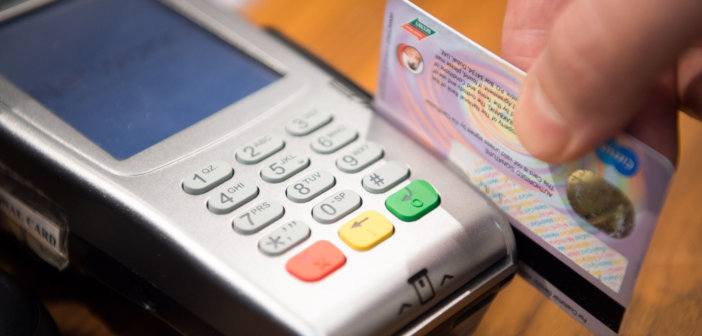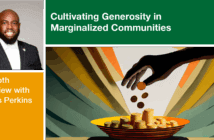Need a roadmap for getting started with electronic giving in your church? Alex Benson of Luther Seminary outlines a three-step process for implementing the methods of giving that most churchgoers prefer and regularly use in other financial transactions.
Did you know that 34 percent of churchgoers prefer to give by recurring payment via credit card? That the number of checks written between 2000 and 2015 declined by 50 percent? That 50 percent of Americans carry less than $50 cash? And that 60 percent of adults would prefer to give electronically to the church?
It’s no secret that electronic giving in churches is on the rise. Recent research by Vanco Payment Solutions suggests that nearly every age group prefers electronic giving. And it’s not only those who are absent on Sunday mornings who prefer more flexible giving options. In fact, this research suggests that some of the most active churchgoers have the strongest preferences for electronic giving.
You will likely find that your journey into electronic giving will require continued nurturing, learning, and adjustment. Even congregations who have offered digital giving options for years might do well to communicate again what options are available.
Digital giving has become the norm in nearly every realm of charitable giving, yet the church has often lagged far behind. Electronic giving options remove impediments for givers, but more importantly, perhaps, offering a way to give electronically can be an act of hospitality, as well (see Adam Copeland’s “Embracing Electronic Giving”.) Electronic giving allows families to give while they are on the go, helping to avoid a summer lag in giving, for example. It helps people commit to more regular giving. And it allows donors to think about congregational giving in a way that better connects to their day-to-day lives.
So, maybe you’re already convinced that electronic giving is an important next step for your congregation, but you aren’t sure how to get there. You’re certainly not alone. In The E-Giving Guide for Every Church: Using Digital Tools to Grow Ministry (Abingdon Press, 2016), Richard Rogers offers strategic insight on how to introduce congregations to electronic giving. His approach? Lead, Learn, and Launch.
Lead
The first phase involves cultivating a culture of generosity and gratitude in your congregation. Rogers recommends reminding people of their own generosity, thanking the people who donate their time, energy, and money to the congregation and the congregation’s mission, and carving out space in worship and beyond to share stories of the fruits of such generosity. Fostering a culture of thoughtful stewardship is essential to the success of any giving platform.
Learn
The next phase invites stewardship leaders to delve into the nitty-gritty of digital giving. Rogers encourages leaders to familiarize themselves with common electronic giving terms, such as:
- ACH (Automated Clearing House): an electronic network for financial transactions such as direct deposit or automatic bill payment.
- Automatic Draft (auto-draft) Authorization: a form filled out by donors to enroll in electronic giving via a debit or credit card or automatic withdrawals from a bank account.
- EFT (Electronic Funds Transfer): the electronic transfer of money from one bank account to another, either within a single financial institution or between institutions.
- Electronic Payments Service Provider: company offering services, software, equipment, etc., to support a church or other organization’s program for electronic donations and payments.
Electronic giving options to consider include:
- A donation button on your website
- A giving kiosk
- Automatic draft authorization
- Mobile giving
Each option will come with its own range of setup, software, and equipment costs, as well as potential subscription or merchant account fees. Be sure to ask about these fees when researching potential service providers. The best fit for your congregation will depend on factors like church Internet speed and wireless accessibility, website design (and whether it is mobile friendly), how many and what kind of giving kiosks you might need, staffing or training needs, available customer support from the service provider, and compatibility with the church’s current software system. Also consider system security, the option for donors to set up recurring gifts, and user-friendliness and ease of access (lengthy or confusing log-in processes can deter potential donors.)
Finally, Rogers says to consider your communication plan, examine your timeline, note potential costs of publicity materials, and create a strategy for inviting people to experience electronic giving for themselves. You might even invite a handful of people to make small donations through your new platform and give feedback on their experience. Continue to build excitement and share stories about the potential of electronic giving! Even congregations who have offered digital giving options for years might do well to communicate again what options are available.
Launch
Finally, you can enter the launch phase. After you have cultivated a culture of generous stewardship, researched the logistics of digital giving, and implemented your communication plan, you will be ready to begin to go public. Enroll members, thank donors, celebrate results, and continue to share testimonies around electronic giving.
You will likely find that your journey into electronic giving will require continued nurturing, learning, and adjustment. However, inviting your congregation into digital giving might just be a risk worth taking as we follow the Spirit’s call into the unfolding adventures of 21st century discipleship.
This article was first published in “Stewardship,” the electronic newsletter of the Center for Stewardship Leaders at Luther Seminary. Used by permission.
Related Resources
- Embracing Electronic Giving by Adam Copeland
- Electronic Giving: A Matter of Vision, Not Just Convenience by Heber Brown
- Online Giving Connects Ministry and Mission by Cynthia D. Weems






